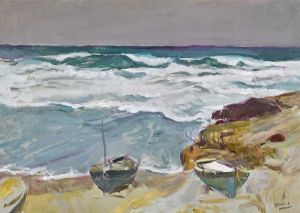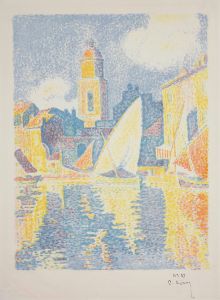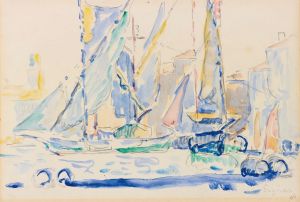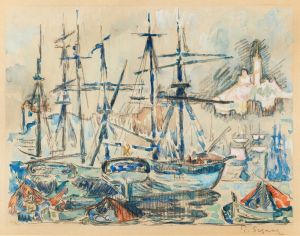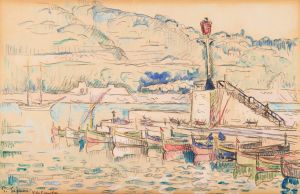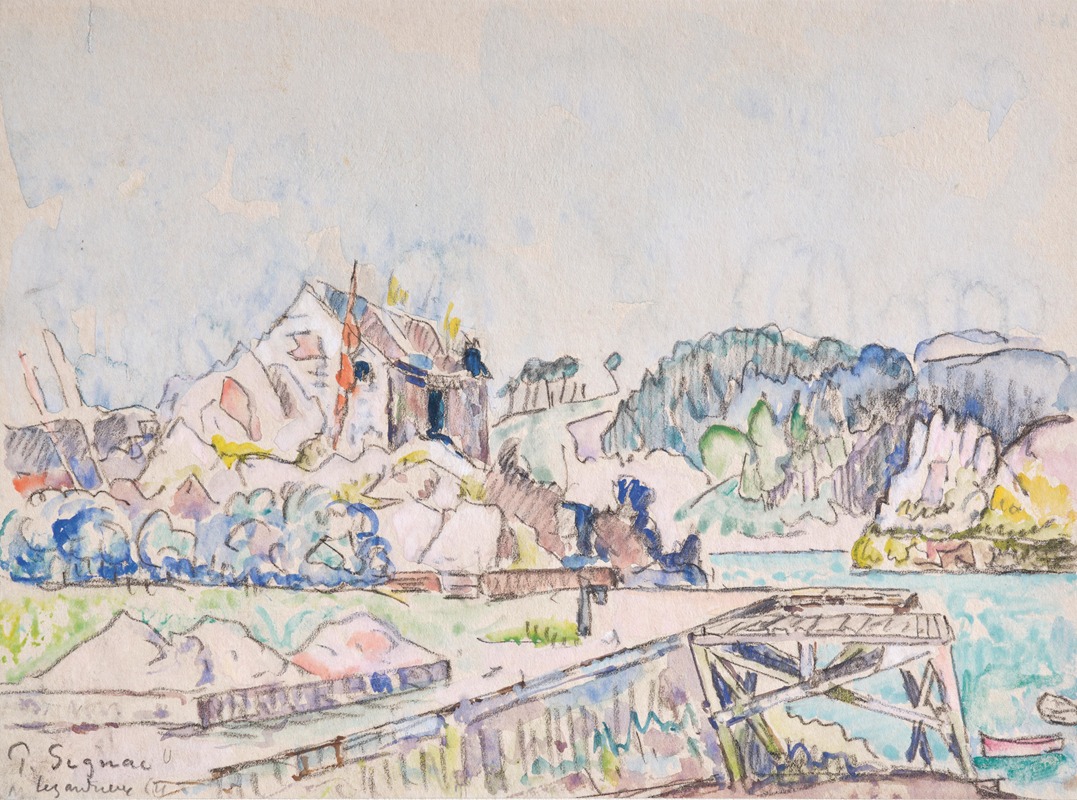
Lezardrieux
A hand-painted replica of Paul Signac’s masterpiece Lezardrieux, meticulously crafted by professional artists to capture the true essence of the original. Each piece is created with museum-quality canvas and rare mineral pigments, carefully painted by experienced artists with delicate brushstrokes and rich, layered colors to perfectly recreate the texture of the original artwork. Unlike machine-printed reproductions, this hand-painted version brings the painting to life, infused with the artist’s emotions and skill in every stroke. Whether for personal collection or home decoration, it instantly elevates the artistic atmosphere of any space.
Paul Signac's painting "Lezardrieux" is a notable work by the French Neo-Impressionist artist, who was a leading figure in the development of the Pointillist technique. Signac, born in 1863, was a contemporary and close associate of Georges Seurat, the pioneer of Pointillism. This technique, characterized by the application of small, distinct dots of color, was intended to blend in the viewer's eye, creating a luminous effect and vibrant surface.
"Lezardrieux" is one of the many works Signac created during his extensive travels along the French coast. Lezardrieux is a small commune in the Brittany region of France, known for its picturesque landscapes and maritime scenery. Signac was deeply inspired by the natural beauty and the unique light of the coastal areas, which is evident in his works from this period.
The painting captures the essence of the Breton landscape with its vivid colors and meticulous attention to detail. Signac's use of Pointillism in "Lezardrieux" exemplifies his mastery of the technique, as he skillfully employs dots of pure color to construct the image. The composition likely features elements typical of the region, such as the sea, boats, and the rugged coastline, although specific details of the painting's imagery are not widely documented.
Signac's work is often celebrated for its vibrant color palette and harmonious compositions, and "Lezardrieux" is no exception. The painting reflects his interest in the interplay of light and color, a central theme in his oeuvre. Signac believed that color was the primary means of expression in painting, and his works often explore the dynamic relationships between different hues.
Throughout his career, Signac was influenced by the scientific theories of color and perception, particularly those of Michel Eugène Chevreul and Ogden Rood. These theories informed his approach to painting, as he sought to create images that were not only visually striking but also grounded in a scientific understanding of color harmony.
"Lezardrieux" is part of Signac's broader body of work that documents his travels and his fascination with the sea. His maritime paintings are renowned for their ability to convey the atmosphere and mood of the coastal environments he depicted. Signac's dedication to capturing the essence of these locales is evident in the meticulous detail and vibrant energy of his paintings.
Paul Signac's contributions to the Neo-Impressionist movement and his development of the Pointillist technique have left a lasting impact on the art world. His works, including "Lezardrieux," continue to be celebrated for their innovative use of color and their ability to evoke the beauty of the natural world. Signac's legacy is preserved in numerous collections and exhibitions worldwide, where his paintings are appreciated for their artistic and historical significance.





